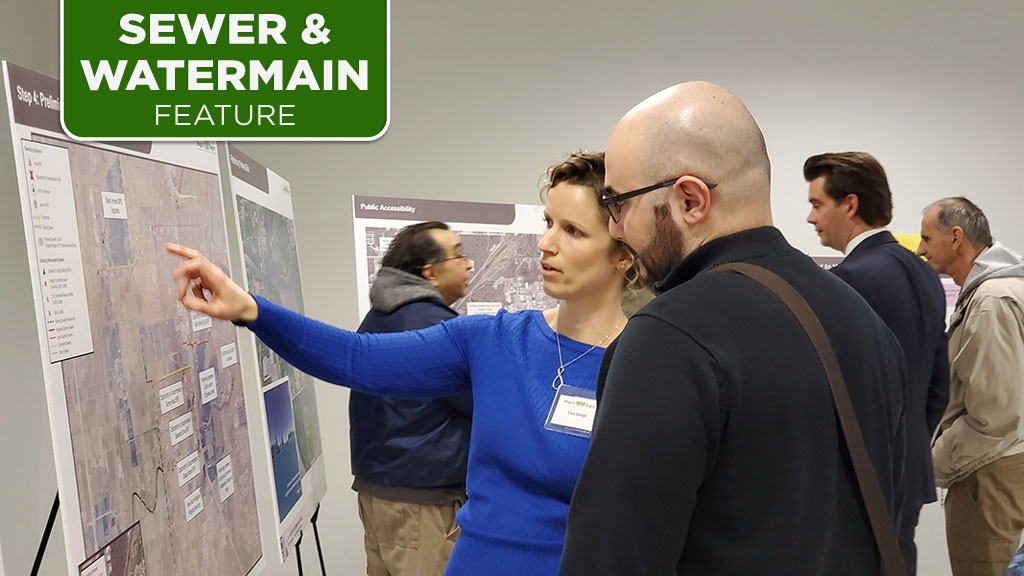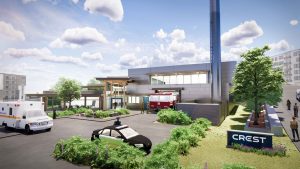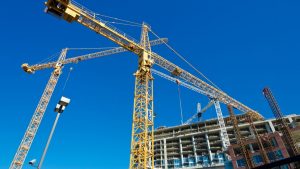Niagara Region is moving forward with plans for a new, $400-million wastewater treatment plant that is intended to support long-term growth and better address wet weather issues by fully capturing all overflows.
The facility is being built to accommodate existing and new flows in the south Niagara Falls area while helping to alleviate the pressure on wastewater systems in Thorold, St. Catharines and Niagara-on-the-Lake.
Construction on the 30-megalitres-per-day plant will take place over the next few years. It will be the biggest, most expensive infrastructure investment in the history of Niagara’s regional government. When completed, all sanitary wastewater flows south of Lundy’s Lane will be directed to the new plant, while flows north of Lundy’s Lane will continue to go to the existing Stanley Avenue Wastewater Treatment Plant.
The preferred location for the plant is a 108.5-acre parcel of property at 6811 Reixinger Rd. in the Grassbybrook area in Niagara Falls near the Welland River and Queen Elizabeth Way. The property is currently zoned industrial.
The plant is one of a string of infrastructure projects to replace assets nearing the end of their useful life in the region.
The conceptual design of the plant is currently being finalized but it is expected to use conventional activated sludge technology, a type of biological process for treating sewage or industrial wastewaters using air and micro-organisms to oxidize organic pollutants, and eventually produce a waste sludge.
Albert Succi, manager of capital projects, water-wastewater engineering at the region, explains that based on the province’s Places to Grow Act and Niagara Region’s own municipal review and master servicing plan update, considerable growth is coming to the region, with the most significant expected in the southern area.
“Our current sewer system and capacity to treat wastewater will not be enough to meet the growing demand coming from new communities, businesses, and facilities like the planned new hospital. Constructing a wastewater treatment plant near a growing community makes sense, as it makes collecting the wastewater easier and lowers costs.”
The project also includes construction of a new trunk sewer along Montrose Road on the west side of the QEW. The gravity sewer will be 15 to 25 metres deep and connect the South Side High Lift Pumping Station catchment area to the new wastewater treatment plant, with connections to existing and future growth areas. The trunk sewer will flow eastward on Reixinger Road to the proposed treatment site.
According to Succi, construction of both the treatment plant and trunk sewer will be complex, as there are hurdles to overcome.
“Some of the anticipated challenges include geotechnical conditions in the area, the depth required for both the new trunk sewer and raw sewage pumping station, as well as staging and sequencing for all of the proposed construction works. Approaches and methodologies to mitigate these anticipated risks will be developed and regularly reviewed during the detailed design and construction phases of the project.”
The plant and trunk sewer will be capable of capturing and reducing wet weather overflows to the environment by more than 60 per cent.
Because Lundy’s Lane is the high point of elevation in Niagara Falls, the new strategy will enable gravity-fed sewers to be installed south of that point and some existing pump stations to be decommissioned.
The plant is expected to strengthen existing development north of Lundy’s Lane by offloading flow and allowing for increased system capacity. The system will also be better able to minimize basement flooding, and mitigate issues such as odour, as well as reduce pollution into rivers and the environment.
The system will provide more flexibility for the future by ensuring the plant is able to respond to changing regulations and needs and freeing up capacity in existing infrastructure such as the Stanley Avenue plant.
Design of the new wastewater treatment plant and trunk sewer are expected to start in 2023, following completion of an environment assessment. Construction of the plant and trunk sewer are anticipated to begin in 2025, with an in-service date of 2027.
Specific details of what the plant will look like are not yet known and will be confirmed during the detailed design phase.
The price tag for the project includes the cost of design, property acquisition, construction and commissioning of all components.
Cost estimates have been developed in accordance with Canadian construction cost estimation standards and industry best practice, according to Succi, and will continue to be refined and estimated with greater accuracy and detail as the projects move through the design process and prior to tendering.
Costs will be shared through development charges and a rate-based budget. A big part of the rational for the plant is the anticipated growth of the region and, as such, lot levies and new development charges will pay a portion of the cost. Some of the costs, however, will likely be reflected in water and wastewater rates.
Niagara Region will also pursue federal and provincial funding if and when grants are made available to municipalities that invest in new infrastructure projects that protect the environment or promote growth.











Recent Comments
comments for this post are closed